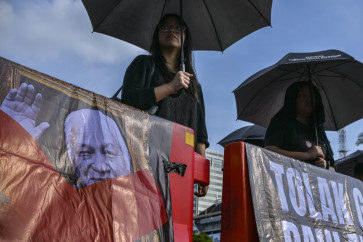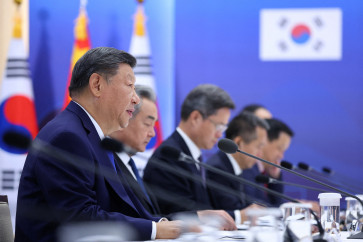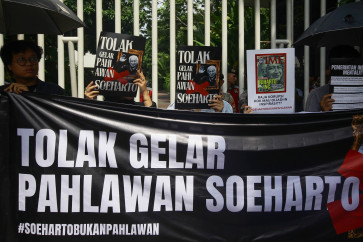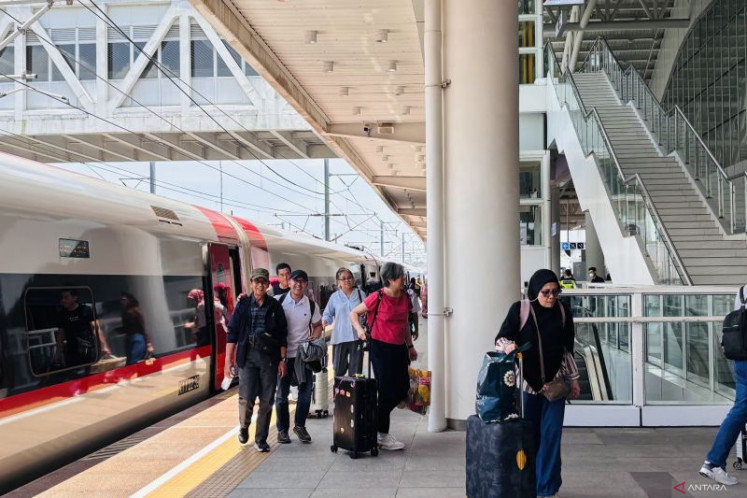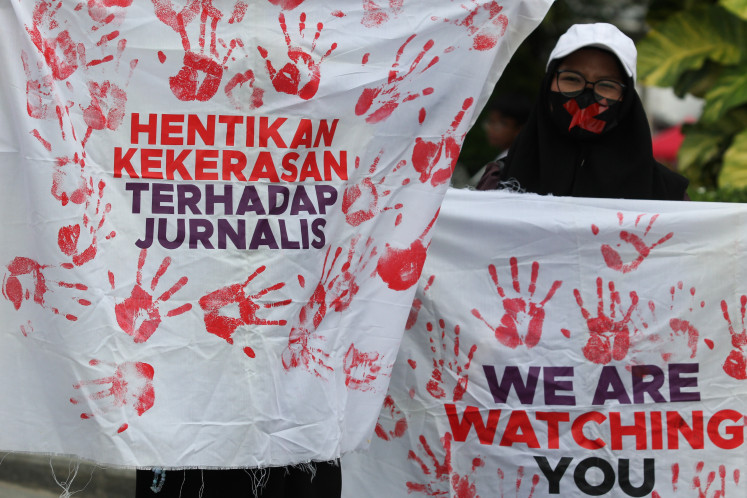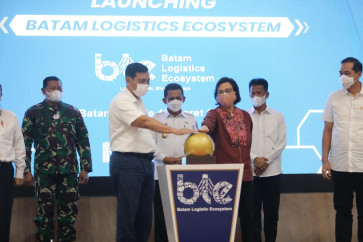Popular Reads
Top Results
Can't find what you're looking for?
View all search resultsPopular Reads
Top Results
Can't find what you're looking for?
View all search resultsReviving investment to accelerate economic recovery
Now, with the economic situation is gradually improving, we need to think of ways and policies to absorb back the laid-off workers back to employment. One of the keys to do this is by reviving the growth of investment.
Change text size
Gift Premium Articles
to Anyone
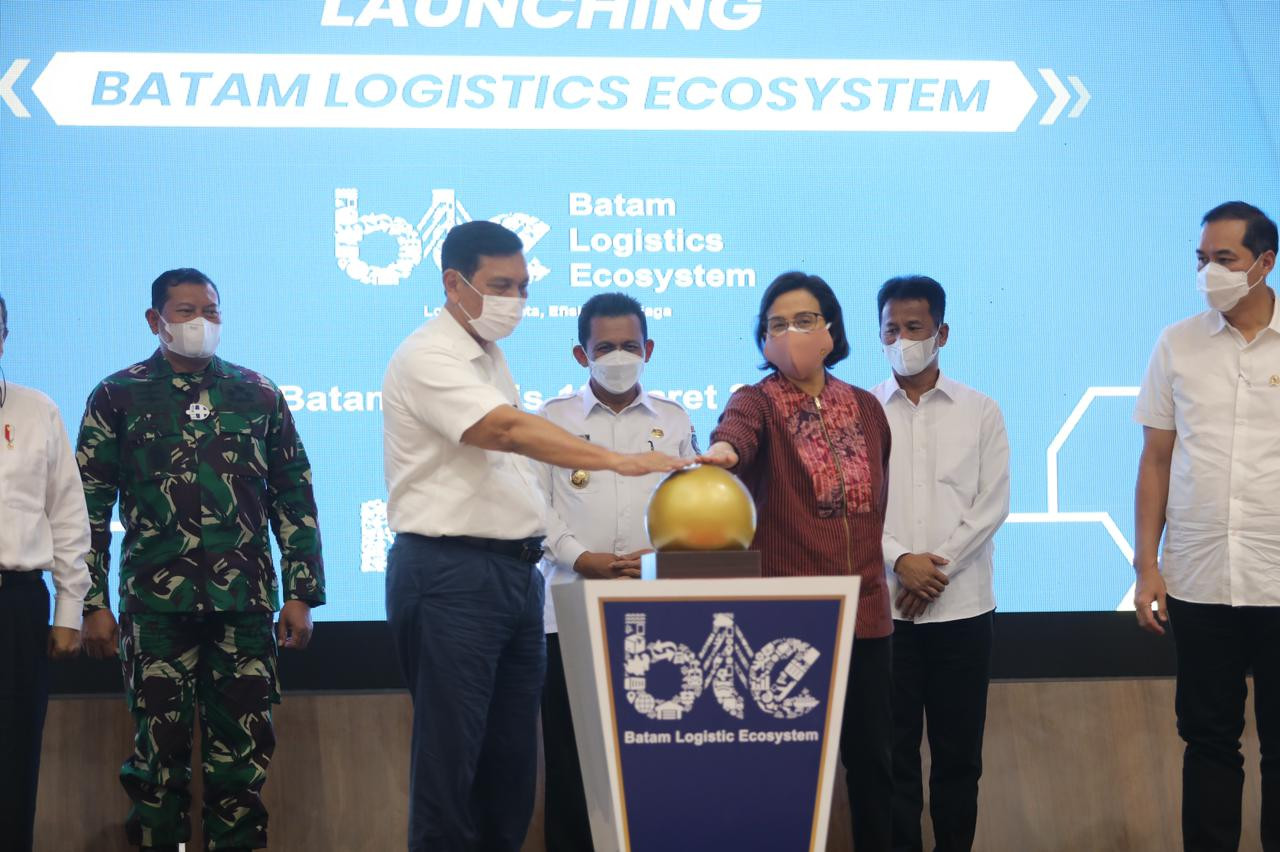 Coordinating Maritime Affairs and Investment Minister Luhut B. Pandjaitan (left) and Finance Minister Sri Mulyani Indrawati (right) at the launch of Batam Logistics Ecosystem (BLE) in Batam, Riau Islands on Thursday, 18 March 2021. (Courtesy of the Coordinating Maritime Affairs and Investment Minister/-)
Coordinating Maritime Affairs and Investment Minister Luhut B. Pandjaitan (left) and Finance Minister Sri Mulyani Indrawati (right) at the launch of Batam Logistics Ecosystem (BLE) in Batam, Riau Islands on Thursday, 18 March 2021. (Courtesy of the Coordinating Maritime Affairs and Investment Minister/-)
D
uring the pandemic, the government stimulus has mostly been focused on supporting consumer spending and purchasing power. Throughout the year 2020 the government disbursed a Rp 579.8 trillion (US$40.60 billion) stimulus package to support the economy hit by the impact of the COVID-19 pandemic. The largest portion of the national economic recovery budget was in the form of social transfers, primarily aimed at supporting spending mostly by middle- to low-income consumers.
The pandemic crisis has weakened social economic indicators. The unemployment rate rose from an average of 5 percent to the current 7.07 percent. The pandemic has also caused the proportion of people living under the poverty line to increase to 10.2 percent in September 2020 compared with a historic low of 9.2 percent in September 2019. Now, with the economic situation gradually improving, we need to think of ways and policies to re-absorb the laid-off workers back into employment. One of the keys to this is by reviving investment.
So far, the economy has continued its gradual recovery path, with the scale of contraction becoming substantially smaller. In the first quarter of 2021, the economy contracted by 0.74 percent year-on-year (yoy), modestly improving from a contraction of 2.2 percent yoy in the previous quarter. The driver of growth was mostly government expenditure and an improvement in net exports, while consumer spending and investment, which account for the largest portion (more than 80 percent) of the national economy, still recorded contractions. Exports have recovered strongly as commodity prices started to increase in line with the economic recovery in major economies especially the United States and China. Government spending has been pushed since early in the year, with the vaccination drive being rolled-out and early disbursement of economic recovery funding.
Efforts at reviving public investment are reflected in rising government capital spending with the continuation of the delayed infrastructure projects of 2020. Capital spending more than doubled by March 2021 compared with 2020. Furthermore, in this year’s Rp 699 trillion national economic recovery budget, the focus is more widespread, not only focusing on social safety and health programs but also putting more focus on priority programs such as labor-intensive infrastructure programs, information and communication technology (ICT), as well as the development of food estates and industrial estates, hence supporting longer-term investment for a sustainable economic recovery.
The recovery in major economies, vaccination roll-out and continued government support have led to an improvement in domestic confidence. This is reflected in the early signs of improvement in investment indicators by the end of the first quarter (Q1) 2021. Imports of raw materials and capital goods recorded a significant rebound in Q1 of 10.2 percent and 11.5 percent, respectively. Furthermore, the Investment Coordinating Board’s (BKPM) data on investment showed a modest rebound. Direct investment growth increased by 4.3 percent yoy in Q1, after softer growth of 2 percent in 2020. On a brighter note, foreign direct investment (FDI) increased significantly by 14 percent yoy, reflecting an improved foreign investor perception of the Indonesian business climate following the issuance of derivative regulations on the Jobs Creation Law. Furthermore, the establishment of the Indonesia Investment Authority (INA) will also attract more investment going forward.
From a sectoral perspective, the developments are also encouraging. The flow of investment mostly entered the manufacturing sectors such as the food, basic metals, metal goods, non-machinery and equipment industries as well as industrial estates. This is in line with the improving indicator of activity in the manufacturing sector.
The IHS Markit Indonesia Manufacturing Purchasing Managers’ Index (PMI) rose to a fresh record high of 54.6 in April from 53.2 in March. Factory activities increased as output, new orders and new export orders returned to growth. Furthermore, investment in other sectors such as commodities-related sectors may also gain ground along with the strong rebound in commodity prices. The digital economy sector also continues to attract interest as it has shown consistently rapid growth along with rising online activity and transactions with the adoption of the new-normal economy. Foreign tech giants, such as Google and Amazon, have shown interest in investing in the wide range of start-ups, e-commerce and digital payment platforms and neo banks in Indonesia.

